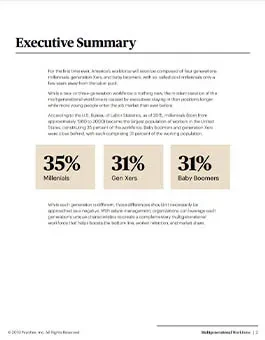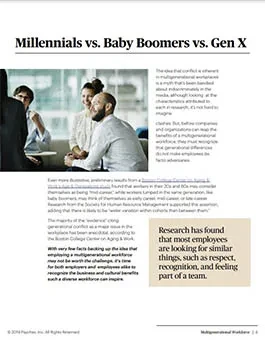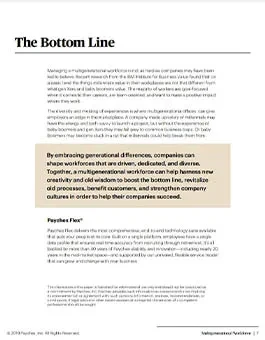Potential Benefits of a Multigenerational Workforce
- Human Resources
- Guide
-
Last Updated: 04/08/2019
For likely the first time ever, America’s workforce will soon be composed of four generations: millennials, generation Xers and baby boomers, with so-called post-millennials only a few years away from the labor pool.
According to the U.S. Bureau of Labor Statistics, as of 2015, millennials (born from approximately 1980 to 2000) became the largest population of workers in the United States, constituting 35 percent of the workforce. Baby boomers and generation Xers were close behind, with each comprising 31 percent of the working population.
While each generation is different, those differences shouldn’t necessarily be approached as a negative. With astute management, organizations can leverage each generation’s unique characteristics to create a complementary multigenerational workforce that helps boosts the bottom line, worker retention, and market share.










